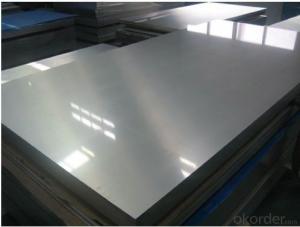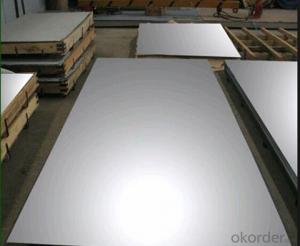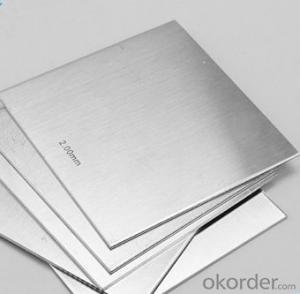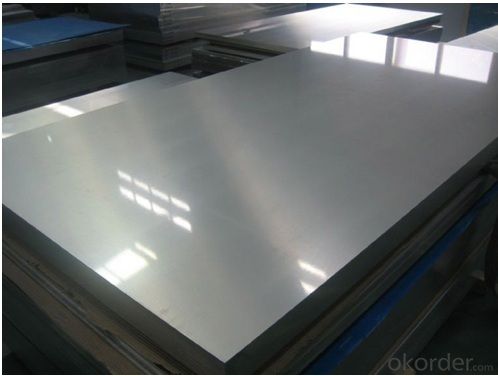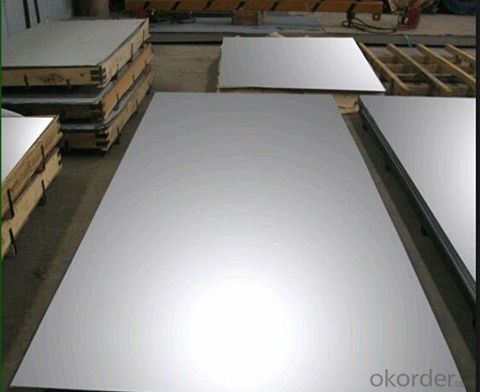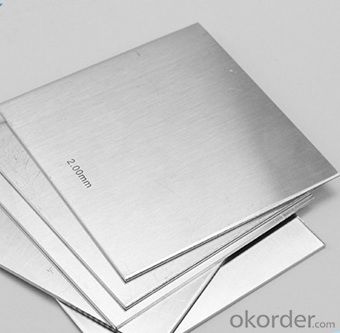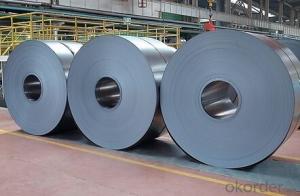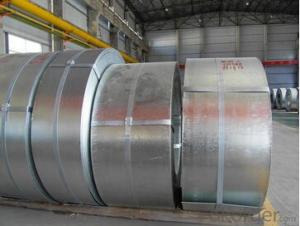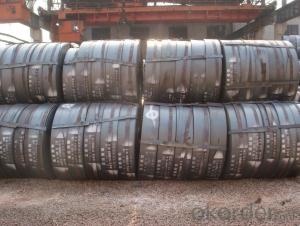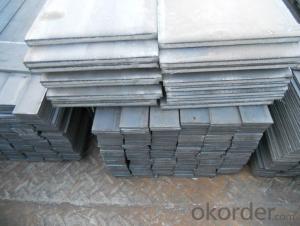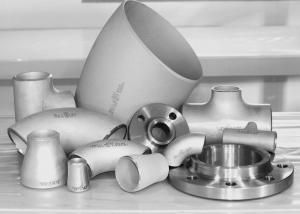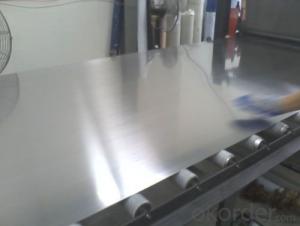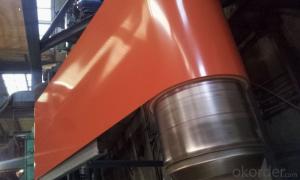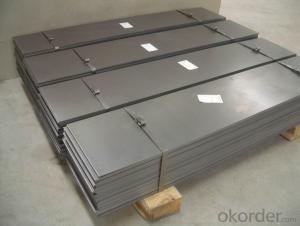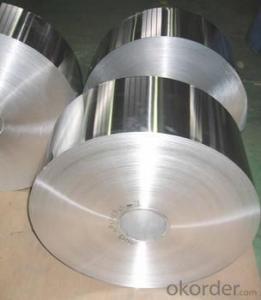HIGH QUALITY STAINLESS STEEL PLATE
- Loading Port:
- Tianjin
- Payment Terms:
- TT OR LC
- Min Order Qty:
- 5 m.t.
- Supply Capability:
- 500 m.t./month
OKorder Service Pledge
OKorder Financial Service
You Might Also Like
Specification
Product Brief Introduction
HIGH QUALITY STAINLESS STEEL PLATE
---Stainless steel plate applies to construction field, ships building industry, petroleum,
chemical industries, war and electricity industries, food processing and medical industry,
boiler heat exchanger,machinery and hardware fields.
Product Features
. Traditional aesthetics outlook
. Suitable for new house or renovation.
. Less joints, watertight
. Long life service
. Tedun also provide relative ridge cap, fasteners and other accessories
Product Specification
Standard:ASTM, GB,JIS,JIS G3302 ASTM 755 EN10169
Grade: DX51D CGCC CS
Thickness: 0.13mm~3.0mm,
Width: 1250,600-1250mm
weight:3-12 MT
Chemical composition:
C | Si | Mn | Cr | Ni | P | S |
0.150 | 0.476 | 11.231 | 12.50 | 0.900 | 0.039 | 0.010
|
FAQ
1. How long will we receive the goods ?
45days after receiving workable L/C
1. how do you control the quality ?
we have our own quality control department ,we will arrange QC person to see the production line ,when goods finish ,before shipment ,our QC person will check the quality as per our test report request ,if the goods is ok ,then we issue the test report ,and we allow the goods shipping ,otherwise will not allow ship the goods.
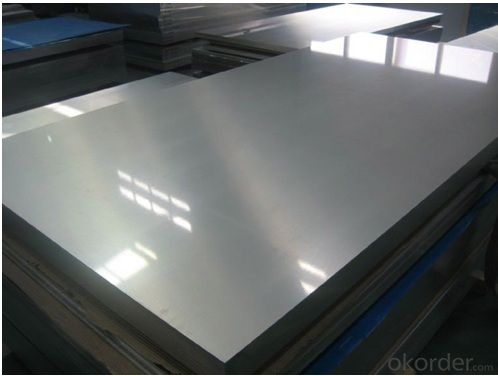
- Q: Are steel strips commonly used in the manufacturing of machinery?
- Yes, steel strips are commonly used in the manufacturing of machinery. They are often utilized for various applications such as reinforcement, structural components, and as a base material for further processing. The high strength, durability, and versatility of steel strips make them an essential component in machinery manufacturing.
- Q: How do steel strips perform in terms of thermal conductivity?
- Steel strips have high thermal conductivity, meaning they are efficient in transferring heat energy.
- Q: What are the advantages of using steel strips in various industries?
- Using steel strips in various industries offers several advantages. Firstly, steel strips provide exceptional strength and durability. Steel is renowned for its high tensile strength, making it an ideal choice for applications that require resistance to heavy loads, impact, and wear. This quality makes steel strips suitable for industries like construction, automotive, and aerospace, where reliable and long-lasting materials are essential. Secondly, steel strips possess excellent formability. They can be easily shaped and molded into various geometries and sizes, making them versatile for a wide range of applications. This flexibility empowers manufacturers to create complex and intricate designs, ensuring that steel strips can meet the specific requirements of different industries. Another advantage of steel strips lies in their corrosion resistance. Steel can be treated with coatings or alloys that offer protection against rust and corrosion, thereby extending the material's lifespan. This characteristic is particularly vital in industries where exposure to moisture, chemicals, or harsh environments is common, such as marine, oil and gas, and infrastructure. Furthermore, steel strips offer thermal conductivity and electrical resistance, making them suitable for industries involved in heat transfer and electrical conduction, such as electronics and power generation. The ability of steel strips to efficiently conduct heat and electricity ensures reliable performance and safety in these applications. Lastly, steel strips are widely available and cost-effective. Steel is one of the most commonly used materials globally, resulting in a well-established global supply chain. This availability makes steel strips easily accessible and affordable for industries of all sizes, providing a cost-effective solution without compromising quality or performance. In conclusion, the advantages of using steel strips in various industries encompass exceptional strength, formability, corrosion resistance, thermal conductivity, electrical resistance, and cost-effectiveness. These attributes make steel strips a popular choice across diverse sectors, contributing to their widespread usage and importance in modern manufacturing processes.
- Q: What are the main factors affecting the machinability of steel strips?
- The main factors affecting the machinability of steel strips include the chemical composition of the steel, the hardness and microstructure, the presence of impurities or inclusions, the cutting tool material and geometry, and the cutting conditions such as cutting speed, feed rate, and depth of cut.
- Q: How do steel strips resist wear and tear?
- Steel strips resist wear and tear due to their high strength, hardness, and durability. The inherent properties of steel, such as its toughness and resistance to abrasion, make it highly suitable for withstanding friction, impact, and other forms of wear and tear. Additionally, steel strips can be further enhanced through various surface treatments or coatings, which provide an additional layer of protection against corrosion and wear.
- Q: What are the common surface rust prevention methods for steel strips?
- Common surface rust prevention methods for steel strips include applying a protective coating such as paint or primer, using corrosion inhibitors, electroplating with zinc or other metals, hot-dip galvanizing, and implementing proper storage and handling practices to prevent moisture exposure.
- Q: What are the different surface engraving methods for steel strips?
- There are several surface engraving methods for steel strips, including laser engraving, chemical etching, mechanical engraving, and electrochemical marking.
- Q: What is the electrical conductivity of a steel strip?
- The electrical conductivity of a steel strip may differ based on its specific type and composition. In comparison to metals like copper or aluminum, steel is generally regarded as a less efficient conductor of electricity. Nevertheless, it does possess a certain degree of electrical conductivity owing to the existence of free electrons within its structure. However, this conductivity is typically lower than that of other metals, thus making steel strip an uncommon choice for applications that necessitate high electrical conductivity.
- Q: Can steel strips be used in the production of automotive springs?
- Yes, steel strips can be used in the production of automotive springs. Steel strips are commonly used as a raw material in the manufacturing of various types of springs, including automotive springs. The high strength and durability of steel make it an ideal material for springs that need to withstand heavy loads and repetitive cycles of compression and extension. Steel strips can be shaped and formed into the desired spring configuration, providing the necessary flexibility and resilience required for automotive suspension systems. Additionally, steel strips can be heat-treated to further enhance their mechanical properties, such as hardness and tensile strength, making them suitable for automotive applications where reliability and performance are crucial. Overall, the use of steel strips in the production of automotive springs is a common and effective practice.
- Q: What is the maximum width of steel strips?
- The maximum width of steel strips depends on various factors such as the manufacturing capabilities of the steel mill, the specific grade and thickness of the steel being produced, and the intended application. However, in general, steel strips can be produced in widths ranging from a few millimeters to several meters.
Send your message to us
HIGH QUALITY STAINLESS STEEL PLATE
- Loading Port:
- Tianjin
- Payment Terms:
- TT OR LC
- Min Order Qty:
- 5 m.t.
- Supply Capability:
- 500 m.t./month
OKorder Service Pledge
OKorder Financial Service
Similar products
Hot products
Hot Searches
Related keywords
